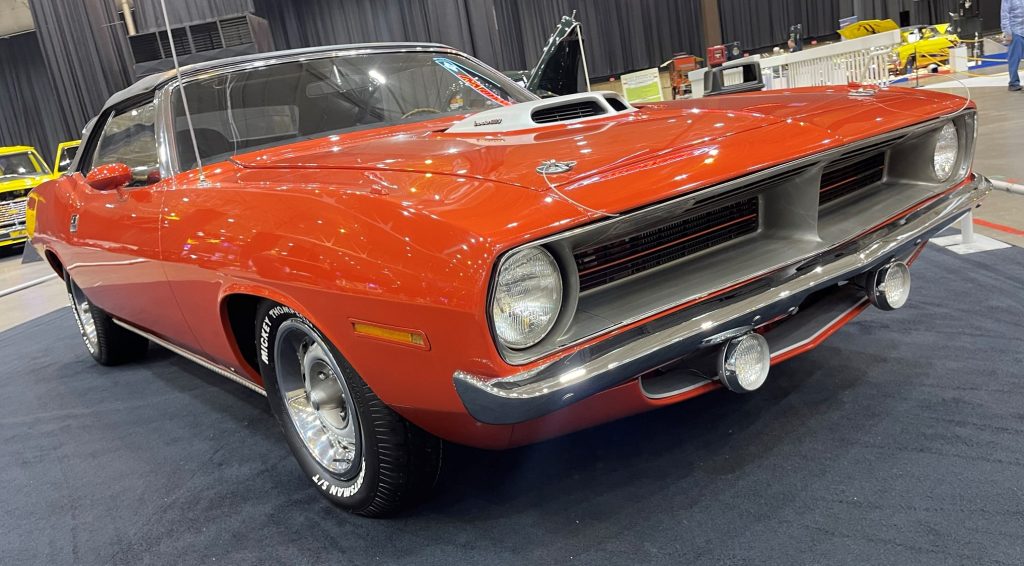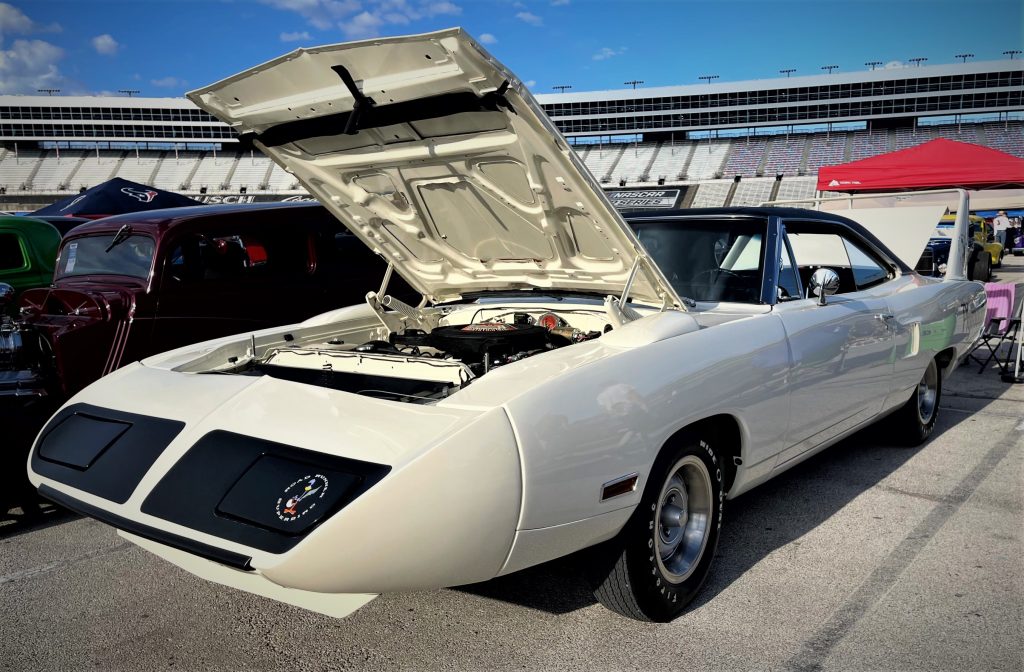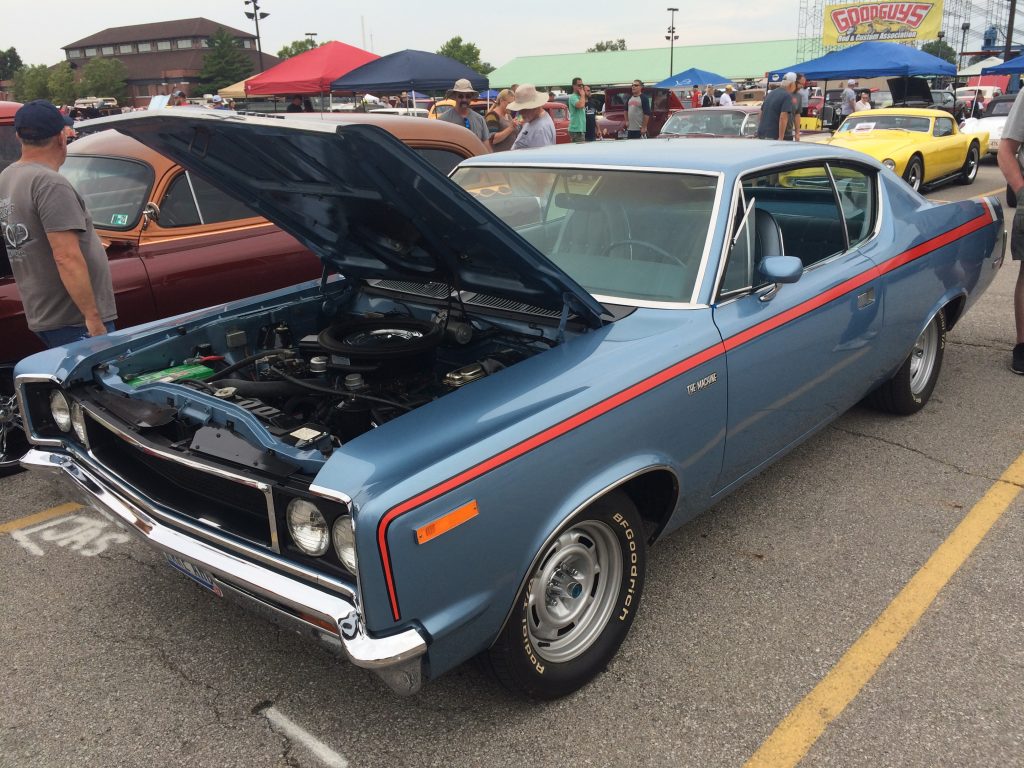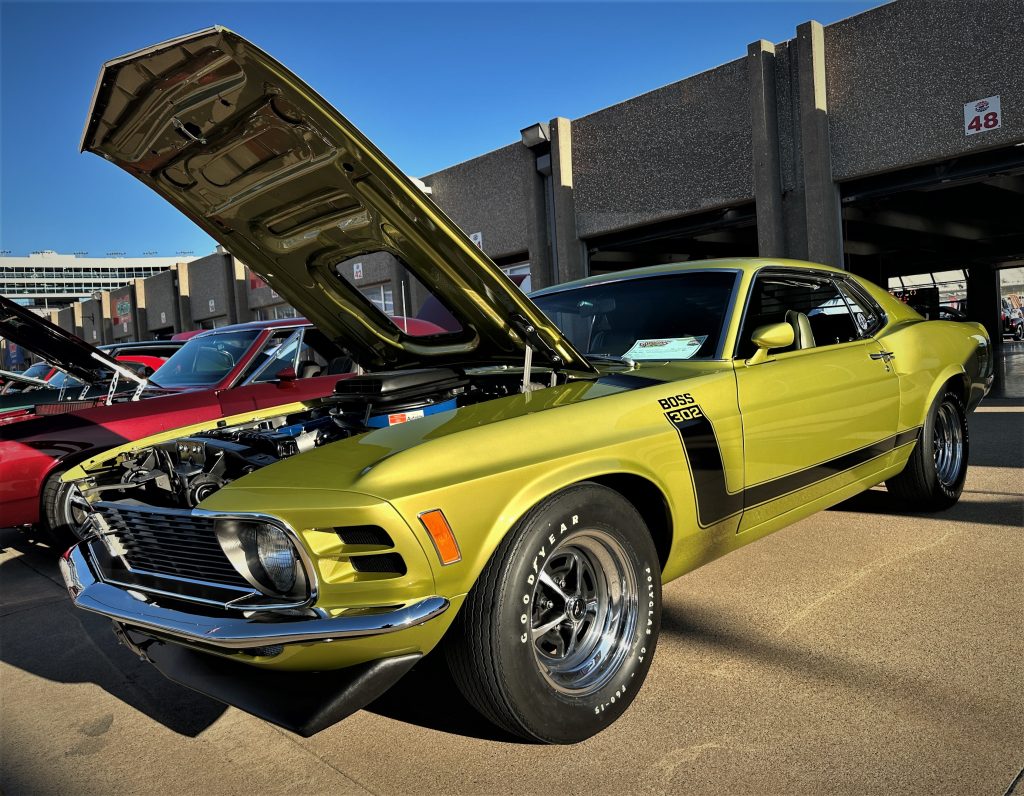What is the best year ever for cars and why?
We put that question to the performance-minded people on Summit Racing’s Facebook page. Using their answers as a foundation, we’ve compiled a list of the Top 8 years in automotive hot rodding and performance history. Why? Because it’s fun to make lists. And it’s even more fun to attempt the impossible–like narrowing 100-plus years of automobiles down to the eight best.
We’ll unveil the list over the next week or so. In order the make the list, a given year must have been nominated at least once by the readers.
1970: “No Holds Barred”
If 1964 was the beginning of the muscle car era, then 1970 was undoubtedly the height of the movement.
You’ll often hear the 1964 to 1972 time period referred to as the golden era of muscle cars, but 1970 is when the power and performance really reached its peak. After that, horsepower numbers began to drop in response to stricter emissions regulations, a gas crisis, and skyrocketing insurance costs.
But not before 1970 made its mark as the second best year in hot rod history, according to readers:
“1970 was the best year. Look at all the true American muscle cars: the GTO Judge, the Chevelle SS454, the Nova SS, the Olds 442, the Boss 429 Cobra, and the Dodge Charger and Challenger. Enough right there to make anyone happy.” –Don W.
“1970. Last year be for the insurance companies and the EPA killed everything. Cars were fast powerful art then.” –Andy P.
“You had the Chrysler E-Bodies, the 2nd Gen GM F-Bodies, and the 70 GM G-Bodies.” –Eric O.
“1970. No holds barred that year for raw power.” –Carl G.
“1970 because it was the first year I believe that horsepower surpassed cubic inches.” –Billy R.
It really was the year of raw, big block power, legendary new pony cars, and some noteworthy updates to existing vehicle lines. Automotive performance steadily gained steam in the 1960s and reached a full crescendo in 1970–and then it all came to a screeching halt. But not before giving us some of the best examples of American hot rod engineering.
Legendary Engines

The 1970s started off the right way in the horsepower department as American automotive companies continued to offer new high performance engines.
Building off the success of its 427-cubic-inch engine, Chevrolet stepped its game up with a new 454 cubic inch mill. Intended for only Chevrolet’s high-performance vehicles, including the Chevelle and Corvette, the Chevy 454 was originally offered in three variations: the LS5, LS6, and LS7 (which was never offered as a factory option to the general public). The 1970 versions of the Chevrolet 454 were the most powerful, with the LS5 putting out around 360 horsepower and the LS6 delivering about 450 horses. And there were rumors the engines’ horsepower output was actually under-reported by Chevrolet during the muscle car wars.
Meanwhile, Ford also offered a new engine: the 351 Cleveland. Designed as a high performance step up from the 351 Windsor, the four-barrel version of the Cleveland offered large valves and ports and a closed “quench” combustion chamber. The Boss 351 would become the most potent variant of the canted-valve 351 Cleveland engine.
At Mopar, engineers were looking to get maximum power from the SCCA-oriented Challenger T/A and ‘Cuda AAR. The race versions of these vehicles ran a destroked version of the 340 small block, but street versions got a whole new engine: the 340 Six Pack. This engine featured a trio of two-barrel carburetors sitting atop an aluminum intake manifold and was conservatively rated at 290 horsepower–about the same as the Z/28s and Boss 302s of the day.
Big Block Muscle

Leading up to 1970, General Motors lifted its 400-cubic-inch engine limit in mid-sized cars.
And floodgates were opened.
Chevy took its new 454 engine and made it a part of the engine lineup for its popular Chevelle lineup. Instead of the SS396 version, the new 1970 Chevelle SS454 was now at the top of the horsepower food chain. In fact, Chevy launched two different versions of the legendary SS454: the LS5 and LS6, the latter of which offered a conservative 450 horsepower. The 1970 Chevelle SS454 LS6 would go on to become one of the most collectible muscle cars ever. Meanwhile, the Oldsmobile 442 and Pontiac GTO were now available with a 455 big block, and Buick would introduce the 1970 GSX–a 455-powered high performance package for its popular Gran Sport.

Big block power reigned supreme elsewhere, too. Featuring Mopar’s brand new E-body, the 1970 HEMI ‘Cuda hit the roadways and dragstrips with the almighty 426 HEMI. 1970 brought us the only year of the distinctive Plymouth Superbird, which was powered by a 426 HEMI, and also saw the Elephant offered in Mopar’s newest gem: the Challenger. Even American Motors got in on the act, offering a 390-cubic-inch powerplant in its Rebel to create the Rebel “Machine.“
Birth of a Legend
Hard to believe, but the now-legendary Dodge Challenger was born in 1970 as part of the Chrysler’s new E-body family. The last of the original pony cars, the Challenger was available with a 383, 426, or 440 engine. The 1970-only Challenger T/A was also offered. It was built as a homologation car that allowed the Challenger to compete in Trans Am racing, and it featured the new 340 Six Pack engine. In 2009, Chrysler reintroduced the spirit of the classic 1970 Challenger by incorporating a similar design into its retro third-generation Challenger.
New Generation Ponies
The General Motors F-body cars debuted in 1967 to much acclaim.
The first generation Chevrolet Camaro and, to a lesser extent, the Pontiac Firebird are some of the most popular cars of all time. But after three years of the same basic design, General Motors debuted a whole new look for the two pony cars in 1970. The second generation body style was quite a change from the popular 1967-69 models, but it set the stage for another legend: the Pontiac Trans Am.
Yes, the Trans Am actually debuted in 1969. However, the new body style introduced for 1970 helped set the wheels in motion for the Trans Am as we know it best: topped with a Shaker hood and “screaming chicken.”
What else did we miss? Tell us in the comments section below!


The 426hemi was one of most famous engines ever built. I don’t many speaking about Chevy’s 327 rated at about 325hp. And the duster and dart with the 340six pack. They could give the hemi a run for its money
The Yenko 427 Engine was the best engine around still to this day when it comes to performance. By the way the 1970 Buick 455 Stage 1 GS put the 426 Hemi engine to shame! Many atricles on this performance group have been written and hands down the Buick Stage 1 GS held the record for the era.
Keep in mind also about Chevy’s small block 350 which was introduced in 1969, which was a strong motor in the Chevy novas. Let’s bring this to your attention, the 421cid in the 1963 grand Prix. I road in one once. My dad thought it had a 389cid in it. I said this is awfully strong for a 389, and he done some research on it and it turned out to be a 421 Pontiac and this thing would rare you back in the seat.
The 350 Engine was used in the Super Sport Camaro in 1967 Also in the Corvette.
You did not mention the 1970 Chevelle SS 396 cowl induction, 375 hp. I had one, which was very powerful. Granted not as bad as the 454, but it could hold it’s own with no problem!
What about 1971 the best Small block ever built The Boss 351 Mustang it would hang a licking on many a Big blocks! or a 1971 429 super cobras jet mustang!